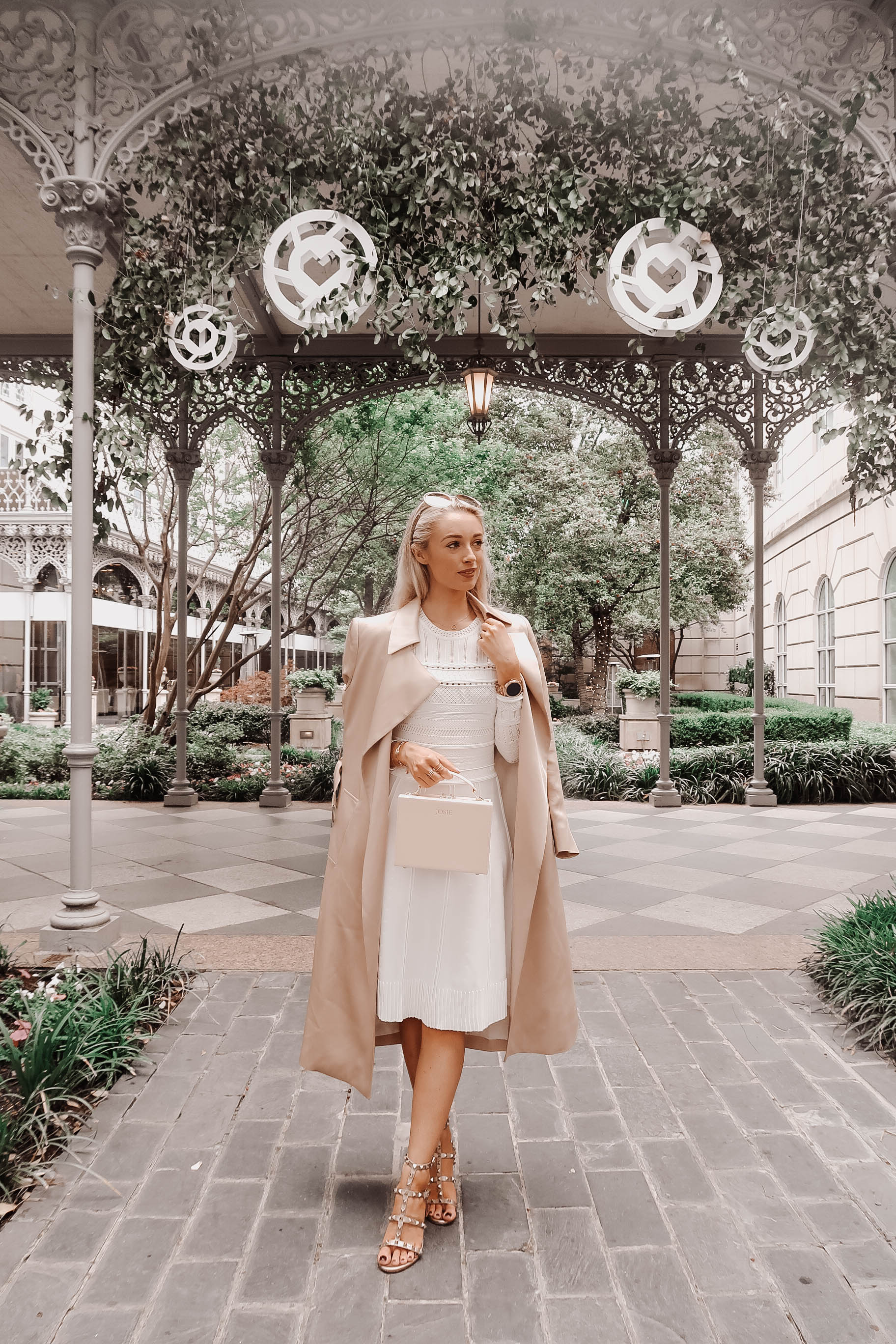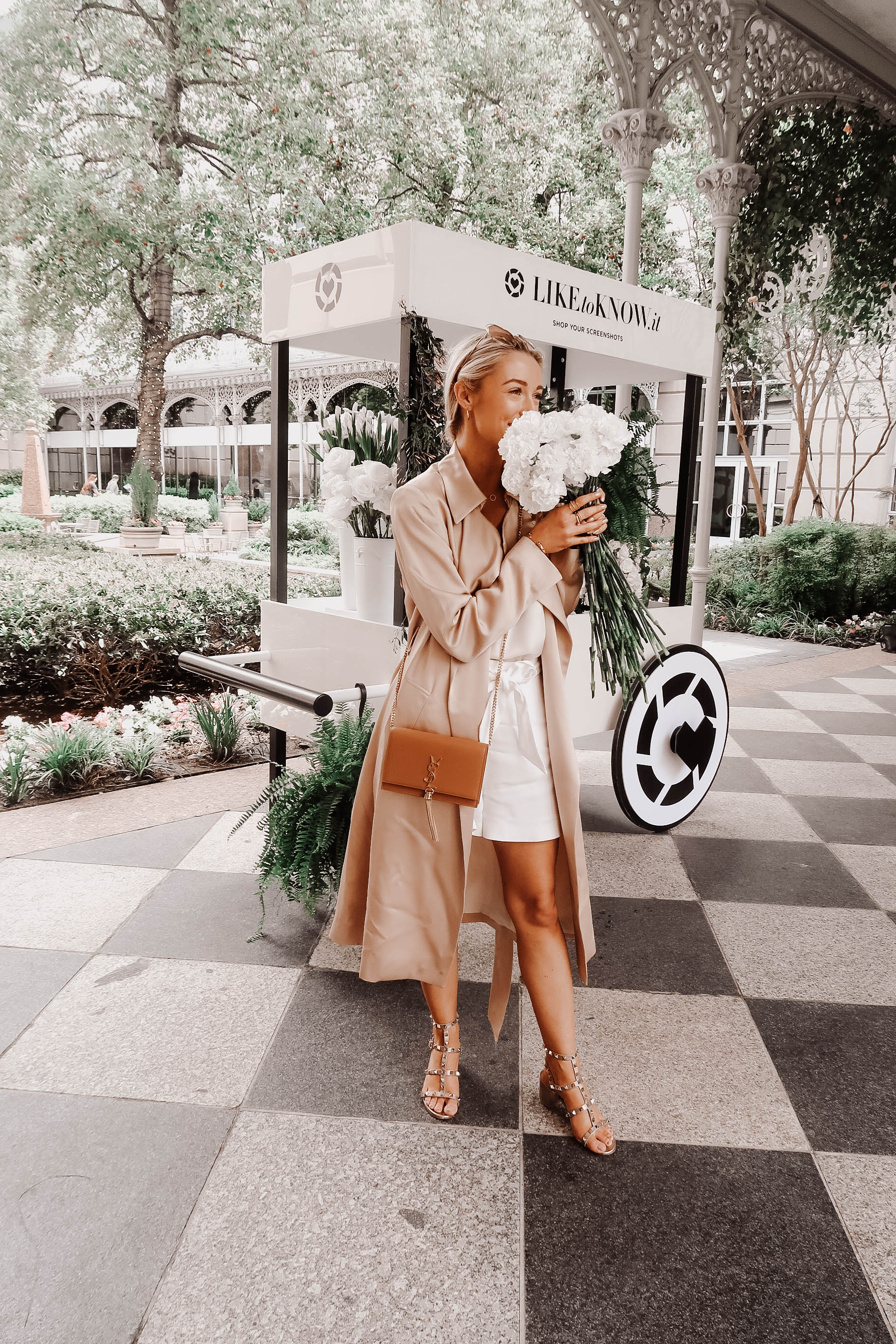
Playsuit by // Jacket by // Sandals by // Bag by // Sunglasses by // Ring by // Bracelet by
A couple of days ago I returned from Dallas after attending the 6th annual rewardStyle conference where top fashion influencers from all over the world gather to learn about trends impacting the blogging community, hear advice from brands for best practises when working together, network with other bloggers, and so much more.
I attended the conference last year as well, and wrote up my learnings including how to grow your blog, a little more about rewardStyle as a company and about the importance of influencers for brands here – so head over to that post as well for even more tips. Today I’m going to share some of the highlights from this years conference, and the tips that I think are the most interesting, and useful to you whether you’re an influencer yourself, or simply enjoy following bloggers / Influencers, or work in the digital space and would like to understand more about how influencers are impacting marketing for brands.
The first presentation was by Amber Venz Box – the founder of rewardStyle. She discussed trends impacting consumers, firstly by demonstrating the huge rise in mobile consumption. In 2014, 30% of clicks to retailers came from mobile, and last year this had risen to 69%, and is still rising even more. What does this mean for Influencers and brands? Well, we need to pay attention to our mobile sites for one, and ensure they’re easy to navigate and easy to shop. We spend so much of our time on apps so it’s important for influencers to utilise options such as Instagram stories – but the mobile consumer is very impatient, you only have to look at apps like uber where we can book a car in just a couple of clicks, well the expectations are the same in retail. Our audiences don’t have the time or tolerance to go to our blogs, find an outfit, and click through – they just want the details instantly.
With regards to marketing trends, it was interesting but also unsurprising to hear that 86% of brands now employ influencers as part of their marketing strategy, with 74% spending at least $25k annually on influencer marketing.
Amber discussed at length the use of our content in un-authorized ways, how many times have you seen a brand use your image without your permission whether that’s on a social network, on their email send outs, or on their website or for paid media? It’s unacceptable, and it’s up to all of us influencers as a whole to let brands know that it is NOT OK to use our content without our permission. Content is our product – and it needs protecting. We pay our photographers, we pay for our equipment, our editing apps, our assistants, so if anyone wants to use the content we produce, and especially if they want to monetise it (e.g. using it as a sponsored or promoted Instagram image, or as a banner ad) then they firstly must gain our consent, but more importantly – they must pay for it.

The second talk of the conference was a panel discussion made up of marketers from global brands including Express, Supergroup and Urban Outfitters. All three, when asked about successful influencer marketing strategies agreed that the ‘always on’ approach for brand partnerships worked best for them, and they choose to spend time finding bloggers who are a natural fit for the brand and work with them continuously, with even more of a focus during key moment for the brand such as a sale period, or new product launch – or even a cultural milestone such as Spring Break, Royal Ascot, Christmas for example.
“Engagement is important, but more important is the revenue you will generate for a brand”
The ladies on the panel discussed how they have to justify their influencer marketing strategy to their CFO / CMO directors, as any money spent on influencer marketing, is money that won’t be spent on magazine advertising, google search advertising or Facebook advertising etc, so it needs justification. Luckily, with analytical platforms such as rewardStyle, they can look at sales data for influencers that they hope to work with, to ensure that they will convert sales for their brand. For example, you’ve probably seen that myself and several other UK influencers are part of the #TopshopGirls campaign, and we were chosen based on our conversion for the brand – we are the influencers that drive the most sales to Topshop and fit the brand image – so by investing in us, we are creating even more content that has a proven track record – the brand knew that our audience already loved the brand, so by investing in the right influencers, it has lead to a hugely successful collaboration.
The panel discussed that yes, reach and engagement is important, but more important is the revenue you will generate for a brand. You can have a million followers but if they’re only interested in what you’re doing / are a fan of YOU, but don’t care about what you wear, you probably won’t be making as many sales for a brand as someone with 50,000 followers who are engaged and follow because they love someone’s style.
I discussed the rise of Micro Influencers at length in this blog post, and the panellists discussed that micro influencers are still very important to brands. They often have a more niche audience that help to drive new sales and present the brand to a new audience. It can be disheartening to see the same ‘OG’ bloggers working on all the campaigns, but there’s still a big opportunity for Micro Influencers with a niche audience.

Coat by // Top by // Shorts by// Bag by //
When brands work with influencers, they look at the ‘Four R’s’ when choosing the right person;
Relevance – your content needs to be relevant to the brand, and also your story must align with theirs.
Reach – how big is your audience? How many people are engaging with your posts?
Resonance – engagement does matter. Do your audience care?! Brands will look at the comments, are they all ‘OMG I love you please notice me’ or are they engaged comments such as ‘Thanks for your tip with this hotel, just booked a trip!’ – the latter is obviously far more valuable.
Revenue – how can we justify our partnerships? Does the influencer convert sales or are they just sharing pretty pictures?!
They also discussed how they analyse a partnership afterwards – firsty checking how your audience respond to a campaign. Are the comments positive? Did they buy the product? They also want to know you’re authentically talking about the brand in content you product that isn’t sponsored, to build a longer term partnership.

Dress by // Bag by // Watch by
A few important guidelines for what NOT to do when working for a brand were also discussed;
- Be flexible and understand that timelines are there for a reason.
- Do not combine sponsored content, if a brand sponsors a video, they don’t want you to squeeze another partnership into the same piece of content.
- Content should feel unique to a brand. Don’t post the same kind of picture but with a different product in the shot. We all know those instagram accounts that will find a pretty bath tub and then post with 10 different products for various random sponsored instagrams… it’s lazy – don’t do it!
- Content should be original – they’re investing in your creative vision – so be creative!
- Make sure your content is authentic to both you and the brand.
- Only work with brands that you WANT to work with. If you’re ashamed to put #ad and have to hide your declaration within a hundred hashtags, you shouldn’t have accepted the partnership. Brands only want to work with people who want to work with the brand.


The final panel was mega-influencer, Aimee Song of Song of Style, in conversation with Amber Venz Box. The two women discussed how much the industry had changed in 5 years, joking about how now brands are so much more excited to work with influencers, and instead of giving out free product in the hope that bloggers would promote them for free, they now know they have to develop a relationship with influencers and invest in their content.
Interestingly, Aimee said the best thing she had done in the last year, was hiring people. She used to do everything herself but struggled with the workload, although wanted to stay true to her audience and for all her content to come from her. It’s a struggle I can certainly relate to! She spoke about getting bogged down with finance, photo editing, data analysis, and had less time to work on creative projects and realised she couldn’t do it all herself – this is no longer just fun hobby after all (although it’s a compliment when people see it as a fun hobby turned job – it means we must make it look seamless!) it’s a business, so we must treat it that way and invest in people.
Aimee discussed motivating her team and finding good people; she highlighted the importance of hiring passionate people with no ego, who were eager to learn from the team. She made a great point about hiring someone smarter than you – the theory of the russian doll – where if you hire someone less capable than you, and then they hire someone less capable than them, you get a team of trolls. But if you hire someone better than you, you end up with a team of giants.
Her final tip was regarding Instagram; she joked about how it’s important to make your images stand out – the world doesn’t need another avocado on toast shot after all!
I hope you found this post useful darling and keep a look out for my Dallas vlog going live tonight!
xoxo

